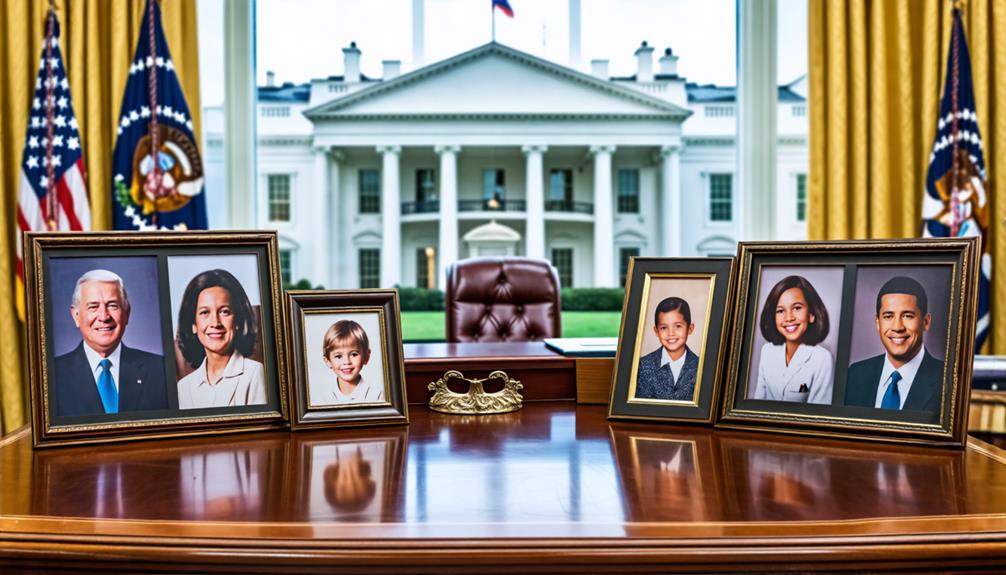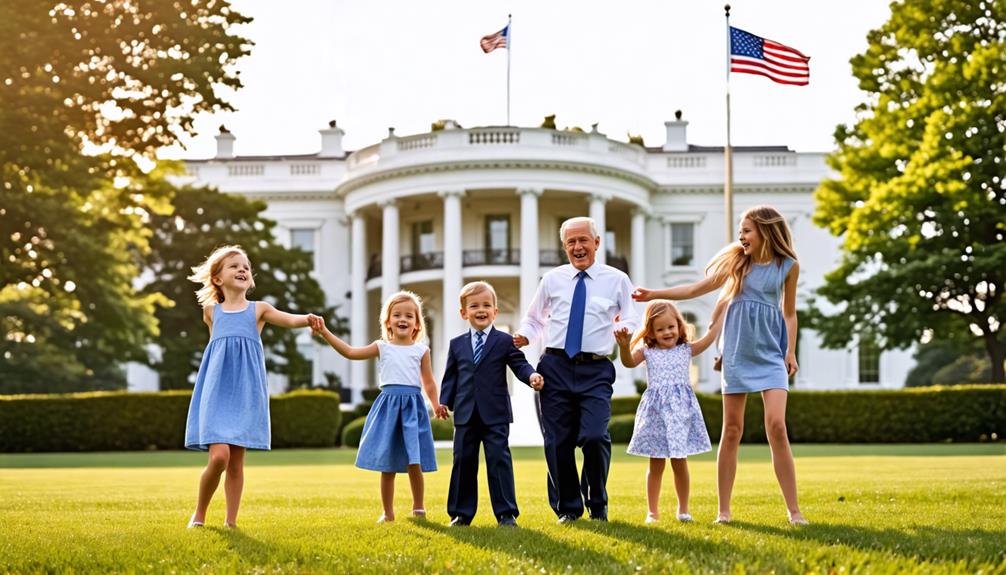You might be surprised to learn that every U.S. President has had at least one sibling. This intriguing fact raises questions about the role of family dynamics in shaping future leaders. Have you ever considered how growing up with brothers or sisters might influence a person's leadership style? As you ponder this, you'll find that the impact of sibling relationships on presidential development goes far beyond mere coincidence. It's a pattern that offers fascinating insights into the qualities that have defined America's commanders-in-chief throughout history. But what exactly does this mean for aspiring politicians and the future of leadership?
Key Takeaways
- Gerald Ford, initially thought to be an only child, discovered three half-sisters later in life.
- The average number of siblings for U.S. Presidents exceeds five, indicating large family backgrounds.
- Birth order analysis shows 15 Presidents as firstborns, 23 as middle children, and 7 as youngest.
- Many Presidents have half-siblings, including Franklin D. Roosevelt, Bill Clinton, and Barack Obama.
Presidential Sibling Dynamics

Family ties among U.S. Presidents reveal a rich tapestry of sibling relationships, ranging from large age gaps to unexpected discoveries of half-siblings later in life.
You'll find that Presidents often come from large families, with an average of over five siblings each. This dynamic has shaped their experiences and perspectives.
Consider Franklin D. Roosevelt's 28-year age gap with his half-brother, or Barack Obama's decade-younger half-sister Maya. These relationships highlight the diverse family structures within presidential histories.
Even Gerald Ford, long thought to be an only child, discovered three younger half-sisters later on.
Birth order and sibling dynamics play a significant role in shaping personalities and leadership styles.
As you explore presidential family trees, you'll uncover fascinating stories of half-brothers, half-sisters, and complex family connections. These sibling relationships offer unique insights into the personal lives of America's leaders.
Birth Order Impact
Often overlooked, birth order has played a significant role in shaping the personalities and leadership styles of U.S. Presidents throughout history. You'll find that 15 Presidents, including Joe Biden, are firstborns, while 23 are middle children, and seven are the youngest in their families. This diverse distribution reflects the impact of birth order on personality traits and leadership styles.
| Birth Order | Number of Presidents | Notable Examples |
|---|---|---|
| Firstborn | 15 | Joe Biden |
| Middle | 23 | Abraham Lincoln |
| Youngest | 7 | John F. Kennedy |
Firstborns are often seen as more driven and responsible, which may contribute to their success in reaching the highest office. With an average of over five siblings per President, these larger families have shaped the dynamics of leadership. Understanding the impact of birth order can provide insights into the personalities and decision-making processes of our nation's leaders.
Notable Family Structures

While birth order plays a significant role, you'll find that the family structures of U.S. Presidents are equally fascinating and diverse.
Many Presidents have unique half-sibling relationships that shaped their family dynamics. For instance:
- Franklin D. Roosevelt had a half-brother born 28 years earlier.
- Bill Clinton's half-brother Roger is 10 years younger.
- Barack Obama has a 10-year age gap with his half-sister Maya.
These examples highlight the varied family structures among Presidents.
You'll notice that large families were more common historically, with many Presidents having multiple siblings or half-siblings.
Even those perceived as only children, like Gerald Ford, often had complex family backgrounds.
The age gaps between Presidents and their half-siblings can be substantial, as seen with Roosevelt and Clinton.
These diverse family structures offer unique insights into the personal lives of America's leaders.
Conclusion
You've seen how sibling relationships shape America's leaders.
As you consider future presidential candidates, remember that their family dynamics play an essential role in their leadership style.
Whether they're the oldest, youngest, or somewhere in between, a candidate's place among siblings can offer insights into their character.
It's not just about governance; it's about understanding the person behind the podium.
Keep this in mind as you evaluate potential presidents.

Leave a Reply